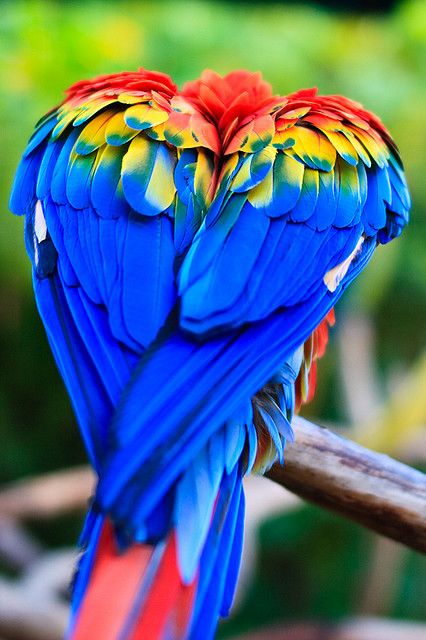
Fat and balding – sadly, those words described our canary, Twitter. A year after we got him, during his second molt, he developed several bald patches on his body – on the top of his head, under his chin, and on his chest. At first, I thought he was plucking, but there was no way he could reach the top of his head, so it was quite perplexing. We loaded his cute little self in the car and took him to an avian veterinarian.
First, she noted that he weighed in at 32 grams. Apparently, he was supposed to weigh 25! As she held him, she pushed aside his wispy belly feathers, frowned, and showed me several yellowish fatty tumors under the skin. I was shocked. The diagnosis was that he was taking in too many calories and not getting enough vitamin A. I had been providing leafy greens and an assortment of other vegetables and fruits, but it was now very obvious he had been focusing mainly on the seeds. His problem was diet related.
What to do? Ask five different aviculturists about diet and you’ll probably get five different answers. Twenty years ago, avian veterinarians were recommending minimal seeds and an organic pelleted diet. But today’s research has uncovered that a balance of nutritive seeds is actually very essential to diet. So, the pendulum swings. To complicate matters, with hundreds of different species of pet birds kept in captivity, it can’t be said that one size fits all for birds. The key is to find the best balance of nutrients and portions for your particular bird.
It would be perfect if we could replicate the complex diets of our birds’ wild cousins, but in captivity, we’ll need to experiment a little. If you have access to an avian vet, go there first for the best recommendations for your species. But at the very least, a parront should strive for variety and moderation. In the wild, parrots are voracious foragers, moving from food source to food source, eating a variety of foods, as it comes in season.
A good bird diet variety includes vegetables, fruits, whole grains, seeds, beans, and – controversially – pellets. Pellets are not bad in and of themselves, but they should never be your bird’s entire diet, and careful consideration should be made of the quality (fat content, vitamins, minerals) and ingredients. Personally, I am not keen on feeding pellets that contain artificial colors. Some parronts grind up pellets and sprinkle them over their birds’ food to make sure all the nutritional bases are covered. There is no bird “food pyramid,” but unless you have a lorikeet, fruit should be fed in a smaller quantity to minimize sugar intake, and unless the bird is breeding, fat should be minimized as well.
A fantastic way to give your birds a variety of foods is by making “chop.” Recipes can readily be found online and within specialized parrot Facebook groups. Chop checks the variety box with bite-sized pieces of carrot, kale, peas, sweet potatoes, peppers, squash (seeds too!), berries, sprouted seeds, grains or grasses, beans, chickpeas, lentils, brown rice, quinoa, and anything else the recipes call for. Chop can be made fresh to keep in the fridge for several days or frozen in ice cube trays for easy serving. Just beware that freezing lessens a food’s natural appealing texture, and your birds might avoid foods that have become mushy.
It’s also important to note that some foods should not be fed to birds, such as: avocado, chocolate, salt, caffeine, onion, garlic, dairy, mushrooms, fruit pits, and apple seeds, to name a few.
With birds, there is an interesting correlation between mental stimulation and food. One of the reasons an all-pellet diet is not ideal is because birds crave variety – in texture, taste, nutrition – but also in experience. Wild birds spend much of their time foraging for food, tearing open pods, cracking shells and peeling bark. Not only is this great beak and body exercise, but it keeps them mentally active, giving them the satisfying experience of finding their own food. Experiments have been done that show some parrots actually prefer to eat food they have to search for over food sitting in a bowl. Invest in a variety of interesting toys that encourage foraging like this Foraging Perch or discover groups and websites that show you how to create your own foraging items with materials readily found in your household.
Twitter’s diet consisted of the correct food items, but the quantities were off. Once we rationed Twitter’s seed to about two teaspoons a day, and supplemented vitamin A into his water, he lost weight, and went from “borb” to “birb.” By his next annual molt, he was in perfect feather. A proper diet suited to each bird’s individual needs is truly essential for optimum health. Finding the right balance might take a little time, but our babies’ good health is worth it!
Keep lovin’ your birdies,
Lori
Mama to a turquoise green-cheeked conure, American budgie and German roller canary
Links to our FAVORITE raw food diet & organic food, seed, chop, and sprouting brands.
Leave a comment (all fields required)
Comments will be approved before showing up.


